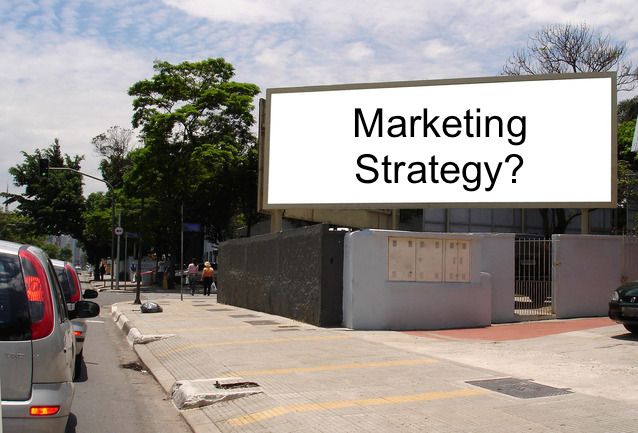Get the Most From Your Marketing Dollars
If you are planning a marketing campaign any time in the near future, the key is to try, test, retry, retest, and so on. In other words, it is an ongoing commitment you have to give your efforts time to perform. Very rarely is successful marketing a one-and-done approach.

“I try not to do anything where I’m not making back three times the money I’ve invested” said Chris Panebianco, CMO at Bankers Healthcare Group.
Marketing is more than just buying a billboard or a business card sized ad in the local newspaper, especially if the intention is to get the most out of your marketing dollars. But according to Chris Panebianco, CMO at Bankers Healthcare Group, that realization is often overlooked.
“It’s not only dentists,” Panebianco said. “People overlook [the importance of making sure marketing dollars are well spent] in every aspect of business. And I think the reason why is they don’t have clear goals.”
If misery loves company, that’s fine. But otherwise, dentists would be wise to disassociate themselves from an approach that is like driving but not knowing where you are going.
SET GOALS
Looking at marketing through a dentist’s eye, Panebianco said it’s critical to know what you want to accomplish before spending a single penny. That means asking yourself questions such as: Is your goal to get more patients? If so, what kind of patient do you want to attract? From there, study the area where your practice is located. Do the demographics match with the group you are trying to attract? Or the service you’re looking to provide?
Once you answer those questions, identify what it will cost to attract those individuals through a mailing campaign, or a billboard, and then back the numbers up.
“If I know I’m going to spend $1,000, how many new patients do I need to make that back?” Panebianco questioned. “I try not to do anything where I’m not making back three times the money I’ve invested.”
Remember, the rule of thumb is that the easiest customer to get in the door is the one who has already been to the practice.
“Always start with your current customers,” Panebianco said. “They’re organic. They’re the patient base.”
START SMALL, HAVE PATIENCE
Of course, everyone would like to initiate a marketing plan and conquer the world, but that is not realistic. Panebianco recommended starting small and utilizing an A/B strategy.
For example, take about 200 to 300 people in a target audience. Split that larger group in half and send each half a different message. The messages might be a free cleaning versus a free x-ray or a percentage off a procedure. That way, not only are you testing on a small scale, you are also A/B testing to see if one promotion works better than another.
“Aim small and miss small,” Panebianco said.
He also stresses not pulling the plug on a marketing effort too quickly.
“I have people who are very reactive,” he said. “If you’re using direct mail, the average response time we see is about 18 days from the time we do the mailing for the bulk of the responses to come in. In this day and age people are glued to their phones and they want results now, but I think you have to be willing to commit the money and be patient.”
Tracking is also essential. If there is an increase of 50 patients from one week to another—how does that show in the numbers? Who are they, and where are they from? When patients schedule an appointment, ask how they heard about the practice. Even if it’s not scientific, Panebianco said, you’ll get a good idea of what’s moving the needle.
And make certain the tracking system is in place before launching a marketing effort.
“Because if you fail, you won’t know why,” Panebianco said. “It just makes good business sense.”
STAY FLUID
Panebianco said that almost every day, he reads about a new technology or a new social network. Marketing and technology are changing—rapidly. As such, he recommends not having your dollars tied up in long-term commitments.
“My budget is very fluid,” he says. “If something is working well I’m able to pull resources from something else. And if it’s not working well, I always have an opt out. I don’t get into long-term contracts.”
In addition, keep your eye on your competition. Imagine putting a lot of time, effort and dollars into a marketing campaign only to find out too late that the dentist down the road is already doing that—and beating you on the price. Panebianco uses a service called Competiscan, which he said is affordable, and provides valuable analysis of competitors’ marketing activities.
Something as cost-effective as a Google search of dentists in the area, or a visit to their websites, will reveal what they are offering and what populations they’re targeting, and how they communicate with those target audiences.
“It’s very important to know your surroundings,” concluded Panebianco.
Click here to sign up for more Dentist's Money Digest content and updates. RELATED:
More Coverage on
- The Best Blogging Strategy: Engage Website Visitors with More than Just Text
- Want to Be the Go-To Dentist? Start By Understanding Who You Are
- Three Ways to Bring New Patients to Your Practice
ACTIVA BioACTIVE Bulk Flow Marks Pulpdent’s First Major Product Release in 4 Years
December 12th 2024Next-generation bulk-fill dental restorative raises the standard of care for bulk-fill procedures by providing natural remineralization support, while also overcoming current bulk-fill limitations.